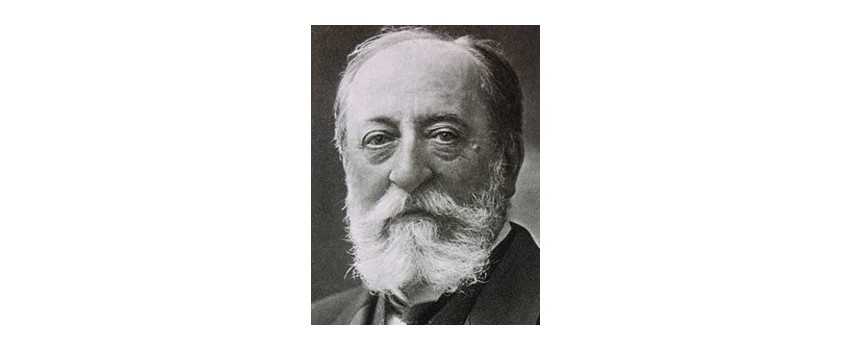Saint Saens, Allegro Appassionato Op 43 For Cello (IMC)
Saint Saens, Allegro Appassionato OP43 for Cello (IMC)
Camille Saint-Saëns, born on October 9, 1835, in Paris, was a remarkable French composer of the nineteenth century. He left an indelible mark on the world of music by showcasing his talent across a wide range of genres, including opera, symphonies, concertos, songs, sacred and secular choral music, solo piano, and chamber music. While not a pioneer, Saint-Saëns played a crucial role in reviving forgotten dance forms like the bouree and gavotte. Known for his conservative approach, he produced numerous popular scores that have stood the test of time.
Early Years and Musical Prodigy
Saint-Saëns displayed his extraordinary musical talent from a young age. He began piano lessons at the tender age of two-and-a-half and composed his first piece at just three years old. By the age of seven, he was already impressing audiences with his piano performances, including works by Beethoven, Mozart, Bach, Handel, and Hummel. Alongside music, he excelled in his academic studies, effortlessly learning languages, advanced mathematics, and developing a keen interest in geology and astronomy.
Education and Early Success
In 1848, Saint-Saëns enrolled at the Paris Conservatory, where he studied organ and composition under the guidance of Halevy. By his early twenties, he had composed two symphonies and gained the admiration and support of renowned figures such as Berlioz, Liszt, Gounod, and Rossini. During this period, he held church organist positions and taught at the École Niedermeyer. Notable works from this time include the Symphony in F ("Urbs Roma") in 1853 and the popular Piano Concerto No. 2 in 1868.
Personal Tragedies and Artistic Triumphs
In 1875, Saint-Saëns married Marie Truffot, but their union was marred by personal tragedy. The couple lost two children within six weeks of each other, with one tragically falling from a four-story height. Despite this dark period, Saint-Saëns channeled his emotions into his music, producing some of his most popular works, including the hauntingly beautiful "Danse macabre" in 1875 and the epic opera "Samson et Dalila" in 1878. Following the tragic events, he became a father figure to the children of his close friend Faure.
The Influence of Travel and Exotic Inspiration
Saint-Saëns found solace in his travels and developed a fascination with Algeria and Egypt. These exotic places served as inspiration for his compositions, such as "Africa" in 1891 and his renowned "Egyptian" Piano Concerto No. 5. Amidst his exploration of foreign themes, he also created works unrelated to these exotic locales, including his enduring Symphony No. 3.
Recognition and Legacy
Curiously, Saint-Saëns' music faced some condescension in his homeland after 1890. However, in England and the United States, he was hailed as France's greatest living composer well into the twentieth century. Notably, his visit to the U.S. in 1915 was met with triumph and adoration from audiences. In the last two decades of his life, Saint-Saëns remained a loner, finding solace in the company of his beloved dogs. He passed away in Algeria on December 16, 1921, leaving behind a rich musical legacy that continues to captivate audiences worldwide.
Conclusion
Camille Saint-Saëns was an exceptional composer who defied the norms of his time by excelling in various musical genres. His contributions to the revival of forgotten dance forms and his ability to create popular scores across different styles have solidified his place in music history. Despite personal tragedies, Saint-Saëns persevered and produced timeless works that continue to be celebrated. His legacy as a composer, poet, and playwright lives on, inspiring future generations of musicians and captivating listeners with his immense talent and creativity.

Saint Saens, Allegro Appassionato OP43 for Cello (IMC)
Saint- Saens, Cello Concerto in A minor OP33 ( Henle)
Saint-Saens, Concerto No 1 in A minor for cello Opus 33 (IMC edition)
Saint-Saëns, Premier Concerto No 1 in A minor for Cello Opus 33 for Cello Solo and Piano Reduction (Durand)
First published by Durand in 1875 this piece remains a popular choice amongst cellists.
IMC Nr. 3681
This lovely movement from Camille Saint-Saens' suite The Carnival of the Animals is published here with a Viola part and the usual Cello part. It comes as part of the highly respected Edition Peters catalogue.